Is the Calf Visinse the long-awaited VR180 camera for the masses?
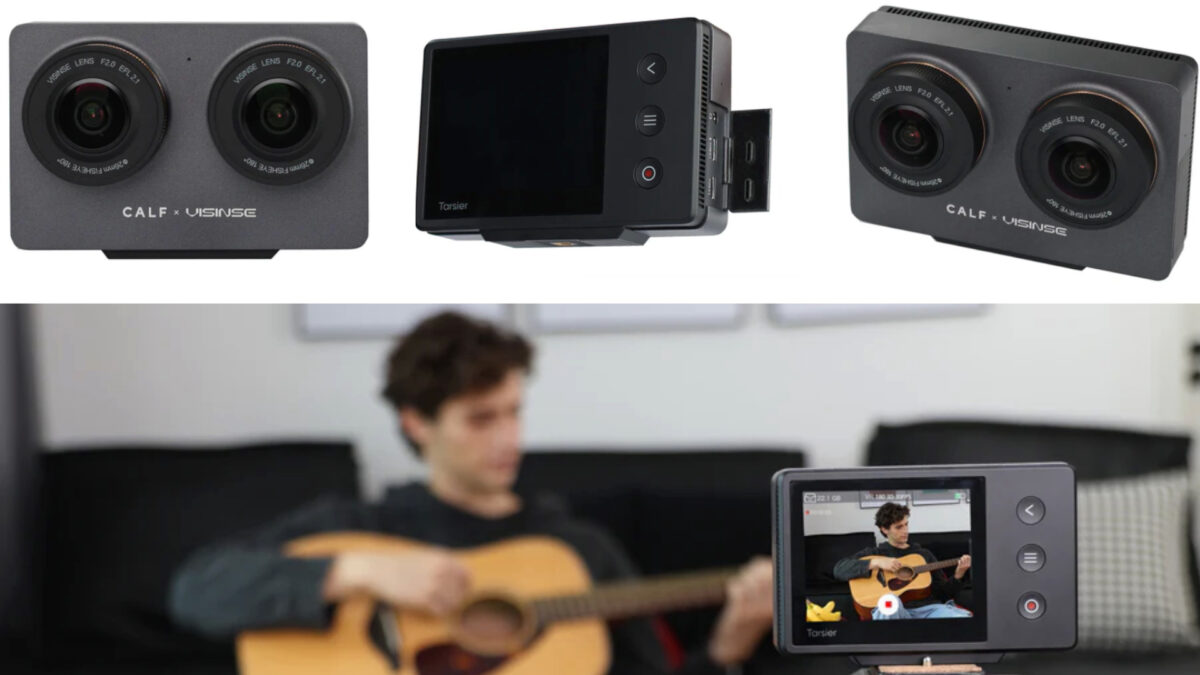
The Calf Visinse enters the long-empty VR180 consumer camera segment. Our expert assesses who should buy one.
an article by Daniel Pohl
The last consumer VR180 camera was released more than five years ago. The foldable Insta360 EVO, which was able to shoot both 360° 2D and 180° 3D, was in many ways the best VR180 camera of its time.
It wasn't until 2022 that the VR180 camera market started to move again, when Canon entered the professional VR180 segment with the Canon EOS R5 and the Canon RF 5.2 mm F2.8L Dual Fisheye lens. However, if you didn't have $6,000 to spend, you'd have to look down the tube or at the overpriced second-hand market, where the old Insta360 EVO can fetch two to three times its original price.
With the introduction of the Calf Visinse, this could change in the consumer sector. Finally, there is another affordable VR180 camera with good features on the spec sheet that should make the Insta360 EVO green with envy.
But how does it perform in practice and is it worth buying? I will discuss this and more in this article.
Content
Evaluation of the Calf Visinse in a nutshell
Calf Visinse is a new VR180 photo and video camera on the market. Videos with 7.2K @ 30 fps or 6K @ 50 fps are advertised and a touchscreen for preview and easy handling is provided. The Calf Visinse is available for about $699 until October 10, 2024, after which the price will increase by about 30%. Customs fees may apply. Unfortunately, there are many reports of negative experiences with the camera.
The Calf Visinse is suitable for you if ...
- your budget for getting started with immersive media is around $700.
- you are satisfied with mediocre recording quality
- you also want to do VR180 livestreams (future feature)
- you have confidence that the manufacturer will fix current bugs with future updates
The Calf Visinse is less suitable for you if ...
- you want the highest possible quality, the best colors and the fastest frame rates, even at a cost of around $6,000
- you already own one of the Canon EOS R5, R5 C or R5 Mark II camera bodies and are only missing the VR180 lens
- you want a product that is now fully developed and does not need to be improved first
Background Calf
The name Calf is not unknown in the world of immersive media. The manufacturer has already released a VR180 camera, which was financed via the Calf Kickstarter project. This was successful, and I know from supporters that they received their hardware as announced.
The camera, now called Calf (Gen 1), offered 8K photos and 6K video. While the price on Kickstarter for early registrations was mediocre at $1,399, the product price of $2,099 was subjectively too high for later purchases.
As someone who uses the professional Canon setup of EOS R5 and 5.2mm dual fisheye lens almost every week, I find the quality of the Calf (Gen 1) to be mediocre. Thanks to the higher resolution of 7680 × 3840 pixels compared to older cameras like the Insta360 EVO (6080 × 3080 pixels), the images look quite sharp.
However, the colors and dynamic range are significantly inferior to those of the more expensive Canon. The Calf (Gen 1) also lacks some data at the top and bottom of the image. Strictly speaking, the camera does not produce a full hemisphere of 180°x180°, but rather an estimated 180°x160°.
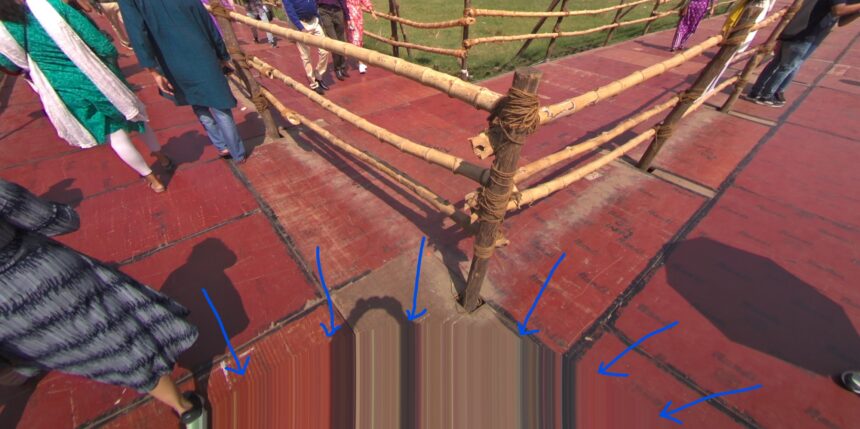
The lower and upper areas of the calf (Gen 1) do not contain any image data. The camera fills this with similar pixel colors. | Image: Sanjay Shukla, markings: Daniel Pohl
I mention this behavior explicitly because the Calf Visinse (Gen 2), if the current specs are correct, uses the same sensors (Sony IMX577) as the Gen 1.
Accordingly, I quickly noticed in the test material that the colors and the dynamic range still did not come close to the media of the Canon EOS R5, and again the lower and upper regions are missing.
In practice, you don't miss these areas too much because you don't always look all the way up or down. Nevertheless, it is a bit of a shame, as this is not the case with any other VR180 camera so far.
Calf Visinse (Gen 2) in comparison
Unfortunately, I have not yet been able to test the camera myself. However, there are already some reviews and media from users on the Internet that can provide you with important information for your purchase decision and comparison with other VR180 cameras.
A VR180-3D 7.2K test video can be downloaded from the Patreon of the well-known media expert Hugh Hou after free registration and viewed in Meta Quest 3, for example. The camera model used is still from pre-production. Small changes, such as to the color palette, could therefore still be made at a later date. In the pre-production version, it was apparently not yet possible to change settings such as the white balance.
In the following image from the pre-production test of the Calf Visinse by Hugh Hou, you can see the differences in sharpness between different VR180 cameras:
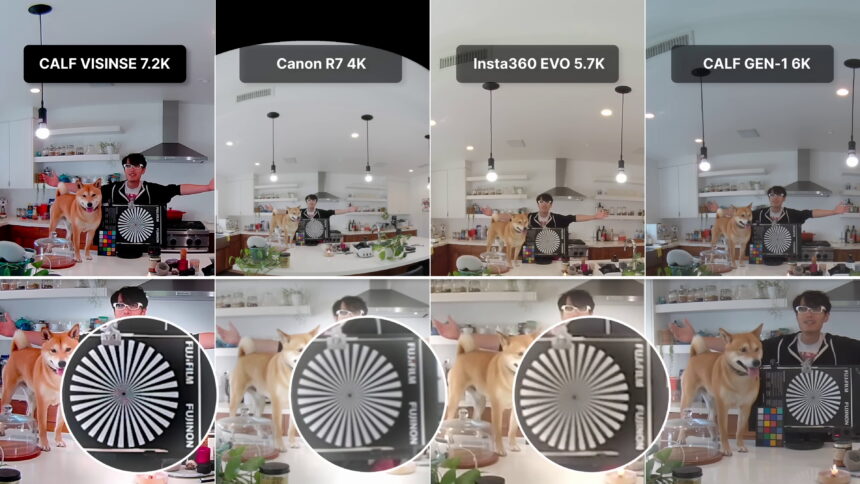
In the sharpness comparison of the different cameras, we see very good details up to the near center of the circle with the Calf Visinse 7.2K. | Image: Hugh Hou
The increased image sharpness due to the higher resolution of the Calf lens beats the other cameras in the test. This is to be expected for the Canon R7 with its 4K video, which is insufficient for the VR180. The comparison with the latest consumer camera in a similar price range, the Insta360 EVO from 2019, is important.
Here too, the Calf Visinse comes out on top thanks to the additional details. The Calf (Gen 1) from the same company performs only slightly worse due to its slightly lower resolution. As already mentioned, the sensors of the two Calf cameras are identical.
Unfortunately, the EOS R5, which would probably have been the best, is not included in this comparison. The colors of the lenses are quite unusual. A promised firmware fix will correct this in the future, as Hugh Hou reports in his video.
Critical voices on the Calf Visinse
Now that the first cameras have also arrived with customers, however, reports of disappointed users(Reddit 1, Reddit 2, Facebook) are piling up.
The most shocking thing for me was a comparison with one of the Calf Visinse (Gen 2), Calf Gen 1 and Canon 5.2 mm cameras that have since been delivered.

Comparison of Calf Visinse with Calf (Gen 1) and Canon R5. | Picture: Bo Lorentzen
At first glance, only the colors look slightly different, which is not necessarily a problem. However, it becomes critical when you look at the details in the section.
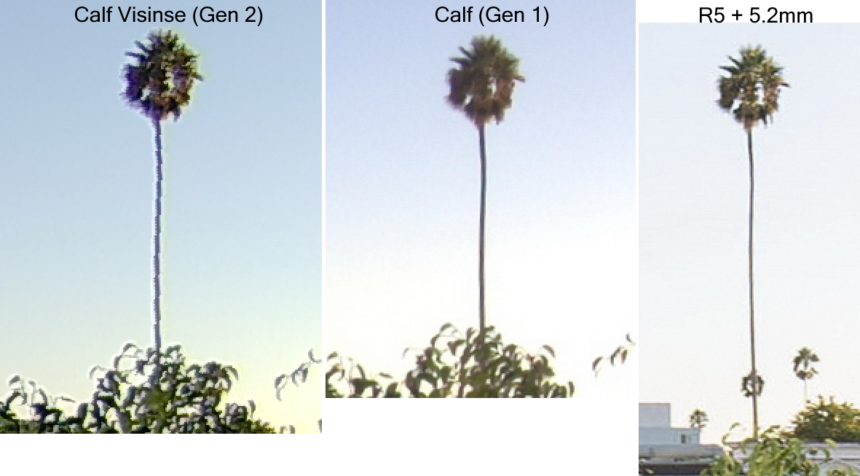
Picture: Bo Lorentzen
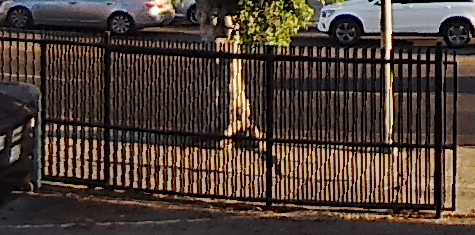
Strange stair step patterns at Calf Visinse. | Picture: Bo Lorentzen
Only the calf view shows strange step patterns on the trunk of the palm tree and on other vertically oriented objects such as the fence. These look so unnatural that it is most likely a software error. Speculations are that it could be a debayering of the camera sensor, an automatic conversion from fisheye to equirectangular format, or, since the colors also appear frayed, a method to reduce chromatic aberrations.
If you are wondering how it is possible that the two Calf cameras, which apparently use the same sensor, have such bugs in a 2nd version of the product, you come across the fact that the camera also bears the name "Tarsier" on the back of the housing. You quickly find a Kickstarter project that wanted to crowdsource this camera under this name. Kickstarter apparently shut down the project early due to "dubiousness". A rumor is circulating that Calf bought up the remaining stock. Much of the Tarsier software stack, including bugs, is said to be left over.
Other critics report confusion between English and Chinese messages in the user interface. If you are not logged into the camera with a Calf account, this seems to be a constant annoyance. There are complaints that the automatic conversion from fisheye to equirectangular format does not seem to be well adjusted. Minimal height differences or rotations of the two lenses do not seem to be corrected by the software, as one would expect. Calf gives a 7-day return window, for which you must request an RMA by e-mail and pay the return shipping costs.
What else is there to know about Calf Visinse?
- Contains IMU and can therefore display a spirit level on the screen to ensure correct alignment. This is particularly important for 3D recordings for VR, as otherwise the orientation of the medium will not match the rotation of the headset.
- Livestreaming possible via Ethernet port
- A promised update will increase the video resolution from 7.2K to 8K (presumably 7680 × 3840).
- f/2.0 lenses
- The camera already stitches the two fisheye images into an equirectangular image internally. Manual conversion using tools on the PC, as with other VR180 cameras, is therefore no longer necessary.
- Uses a fan that could interfere with audio recordings.
- External microphone can be connected
- Supplied with 32 GB internal memory, later 64 GB
What about alternatives to the Calf Visinse?
Apart from used Insta360 EVO or used Vuze XR cameras, there is currently no alternative in this price segment for VR180 cameras.
Canon has already shown a prototype of a foldable 180° / 360° camera several times.
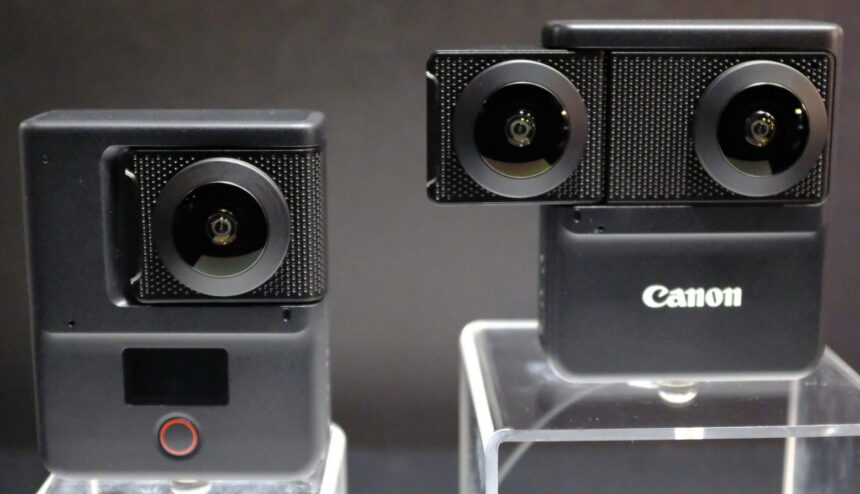
Prototypes of the Canon Foldable. | Image: DIYPhotography, Alex Baker
Although there was even a CE mark at the CES in January 2024, indicating an imminent launch, Canon has been silent since then. Recently, more professional versions were offered with cheaper Canon camera bodies, such as the R6 Mark II for VR180, but these came with a loss of quality compared to the more expensive R5.
Recently, Canon also went the way of a a shorter-angle VR144-3D lens, as I had already suspected from published patent applications. Here, too, the lower entry price comes at a high price, e.g. the limitation to 4K video. A detailed review will follow.
So where does this leave Canon's affordable VR180-3D / 360-2D product? Expectations are high. Issues such as color, dynamic range, and even noise behavior could potentially yield an excellent result from the experienced camera manufacturer Canon. We can only speculate about the cause of the delays. On the one hand, it could be that Canon, like me, has realized that the relevance of 360° 2D outside of action cameras and drones in the VR sector is now in a subordinate position.
Many users found the VR180-3D to be more immersive and didn't want to constantly rotate in 360° media in the long run. However, the foldable mode makes it difficult to install a good screen that is still easy to see in both modes. Would it be better to go straight to "180° only" like Calf instead of the foldable solution?
Another argument for not releasing it could be the potential risk of cannibalizing the company's own, more expensive professional VR180 solutions. The foldable camera prototype has already been shown with 8K video and 8K photo functionality. As a consumer camera, it would probably cost less than $1,000. Who would buy the VR144 setup with the R7 for 4K VR180 video at around $2,500?
Analog with the R6 Mark II and the 5.2 mm Dual Fisheye lens for about $3,500 for 4K VR180 video and 6K photos? Only the R5 C and R5 Mark II with 8K @ 60 fps and 8K photos remain a better alternative (larger sensors, more setting options, larger display, etc.) if you want to go into the €6,000 price range.
One can only hope that the Calf Visinse will provide an impulse here. In the uncompetitive consumer market for the VR180, the camera automatically becomes the best, worst - and only - option for beginners in the field of semi-spherical immersive media, if you ignore the second-hand market and don't want to tinker two cameras together yourself. Hopefully this will wake Canon up. Perhaps Insta360 will also return to its previously coveted products and respond with an Insta360 EVO 2? I hope so.
By the way: If you prefer to work with Short Angle 3D instead of VR180 3D, i.e. media comparable to 3D cinema or 3D TV, there are still some cheaper alternatives. In addition to the iPhone 15 Pro (Max), all versions of the iPhone 16 in all variants now also has a camera for "spatial photos" and "spatial videos". The manufacturer Xreal offers the Beam Pro, a puck for its wearable computer headsets, which can also be purchased separately and used as a 3D camera for little money. A detailed review will follow soon. With the Acer SpatialLabs Eyes, another regular 3D camera (i.e. not 180°) is in the works, which will be available for $550. This is especially interesting for VR, as it records horizontally at a fairly wide angle and therefore fills the field of view well when looking forward in VR. More on this soon.
My conclusion about the Calf Visinse
For a long time, the consumer VR180 camera segment was left empty-handed. The Calf Visinse changes that in one fell swoop and shows in Hugh Hou's test with the pre-production camera that it easily beats older consumer models and even mid-priced Canon setups in terms of sharpness. On the other hand, we have the shots with the very distracting stair-step effects that greatly reduce the overall quality.
Hopefully, a firmware update will fix this problem soon. With this in mind, if you want to get into immersive media production on a smaller budget, now might be the time. Until October 10th, this is possible at a reduced price of about $649 (plus possible customs costs). After that, the price will go up to about $849. If you are unsure, you should continue to monitor the camera and check for new updates, even if the cost is $200 higher.
The author, Daniel Pohl, is CEO and founder of immerVR GmbH. There, Daniel works daily on innovations in the field of immersive media, mostly in the area of VR180 stereo photography and videography. With his app immerGallery (Meta Horizon Store, Steam Store), you can experience immersive photo galleries with voice-overs and background music in various VR formats on Meta Quest headsets – also together with friends in multiplayer. The app also supports video playback for common 2D / 3D, 180° and 360° formats.
Note: Links to online stores in articles can be so-called affiliate links. If you buy through this link, MIXED receives a commission from the provider. For you the price does not change.